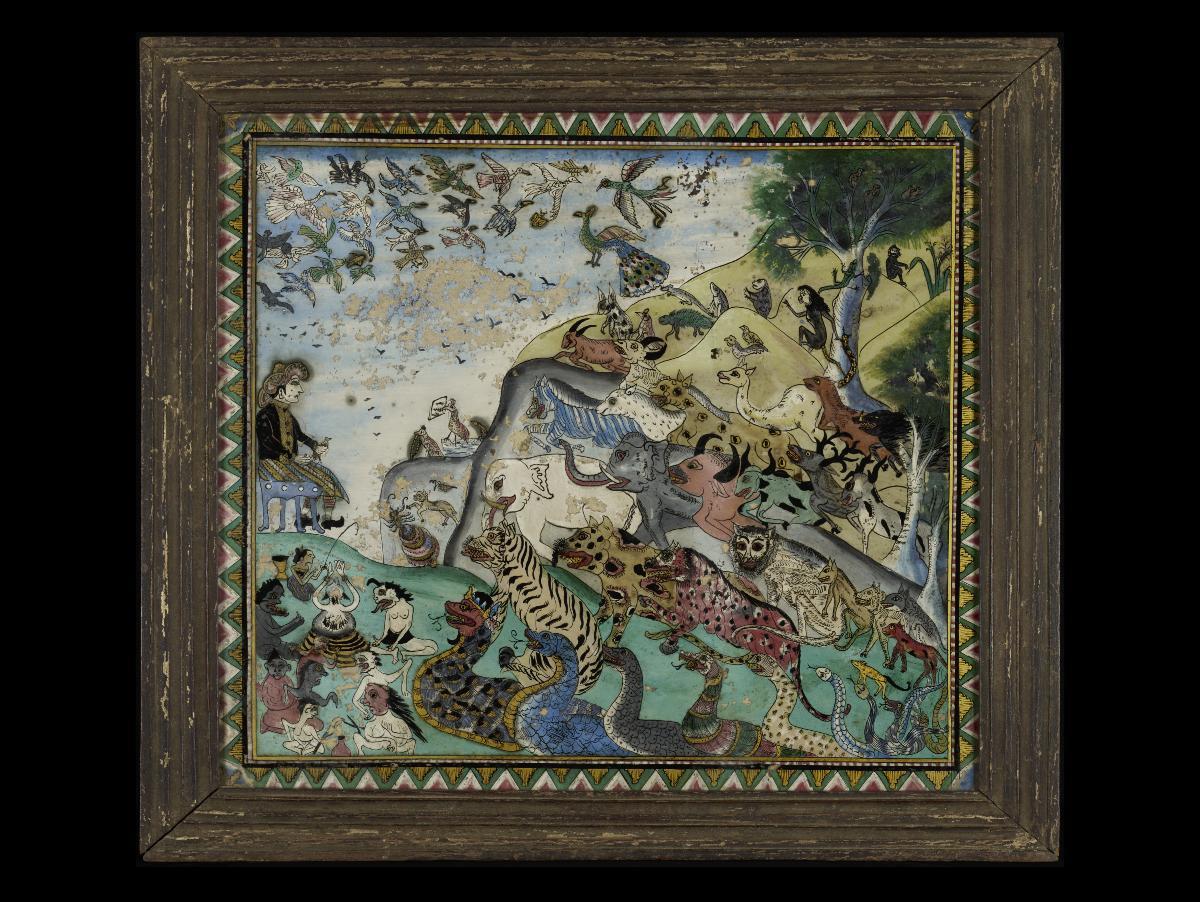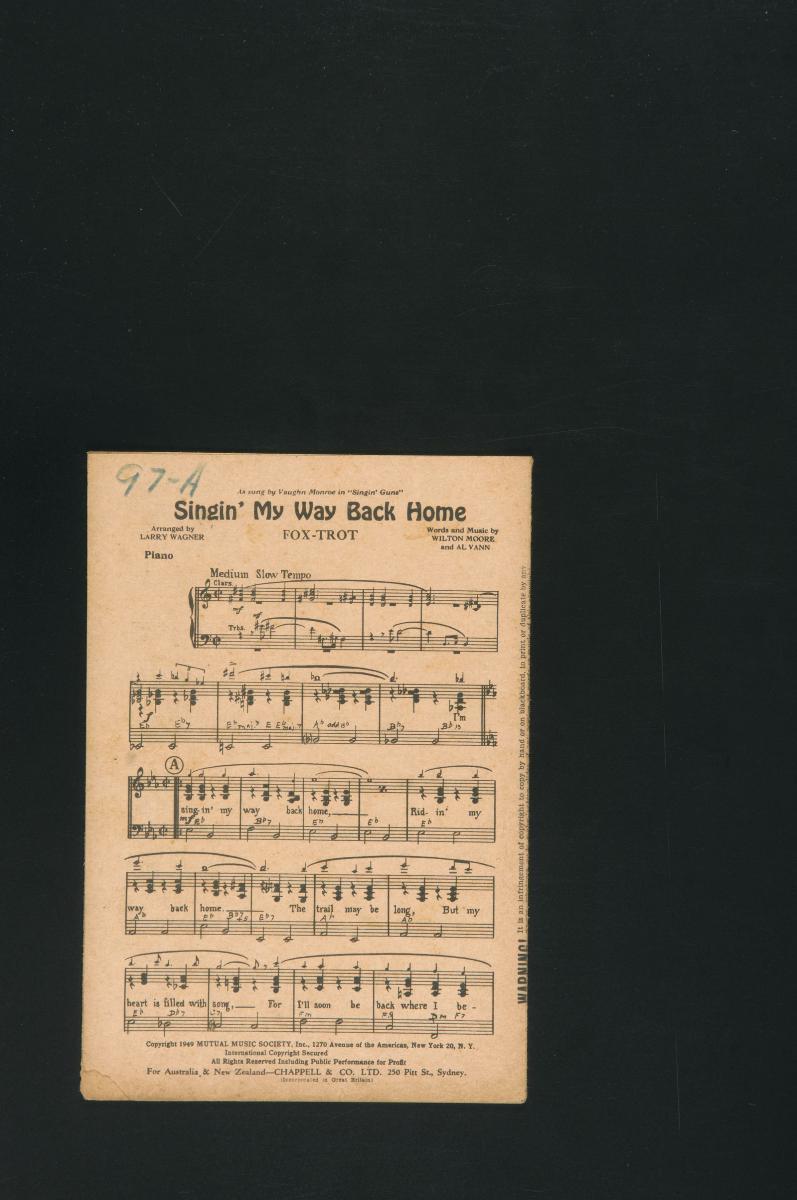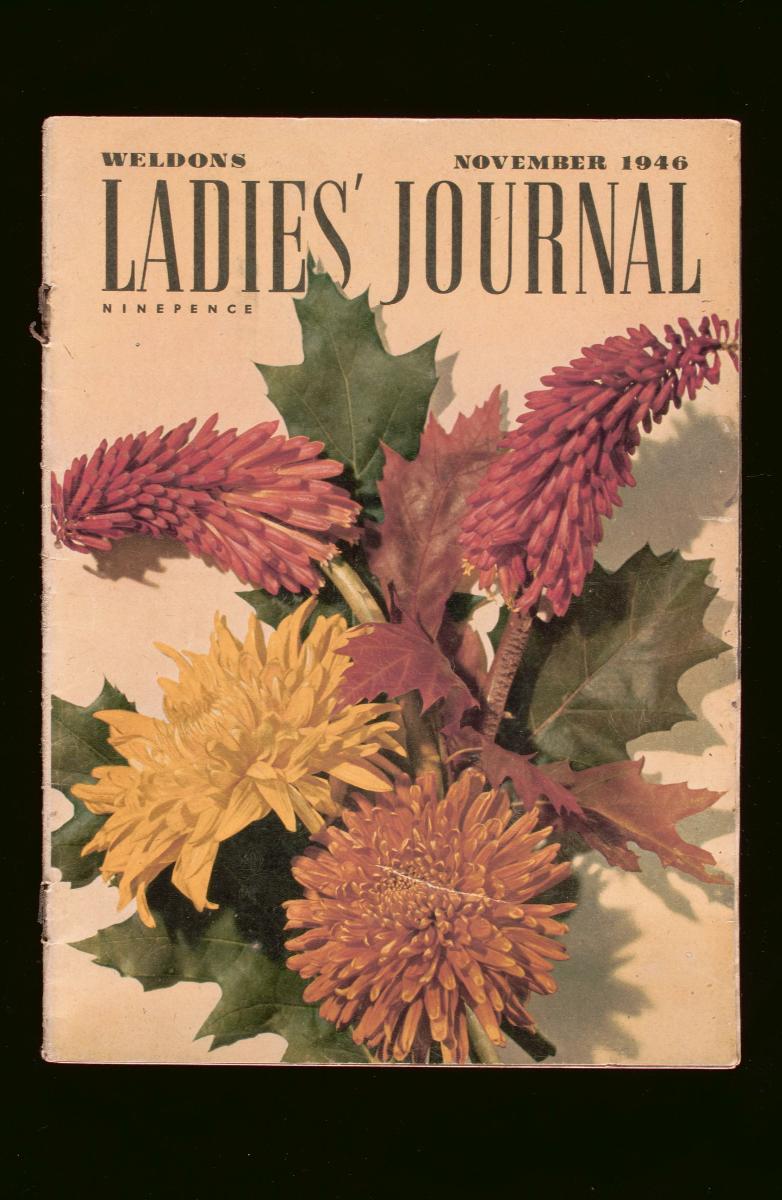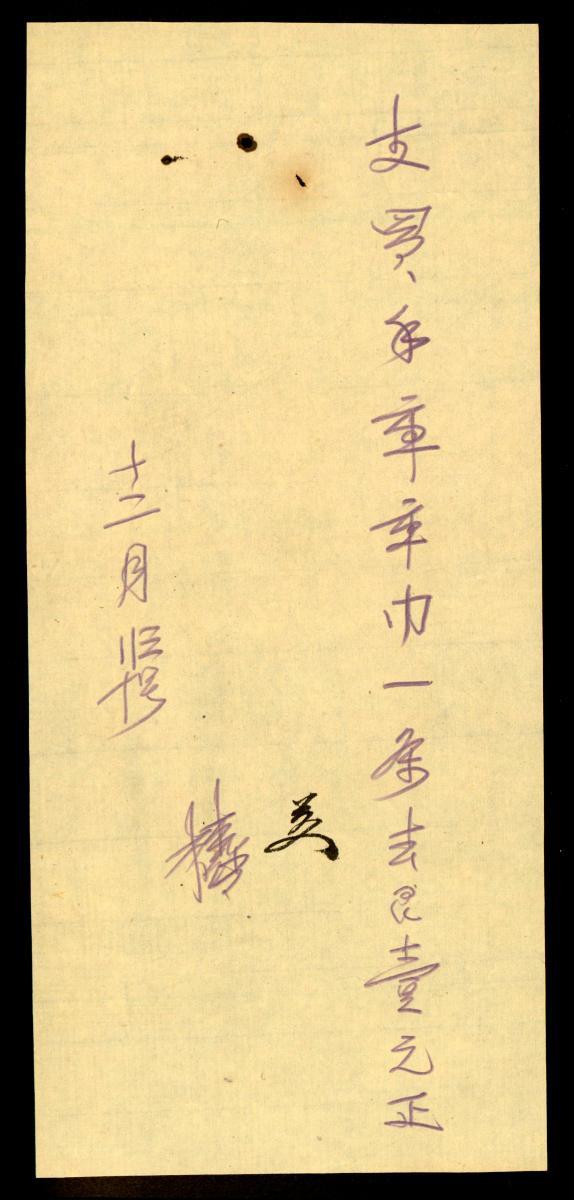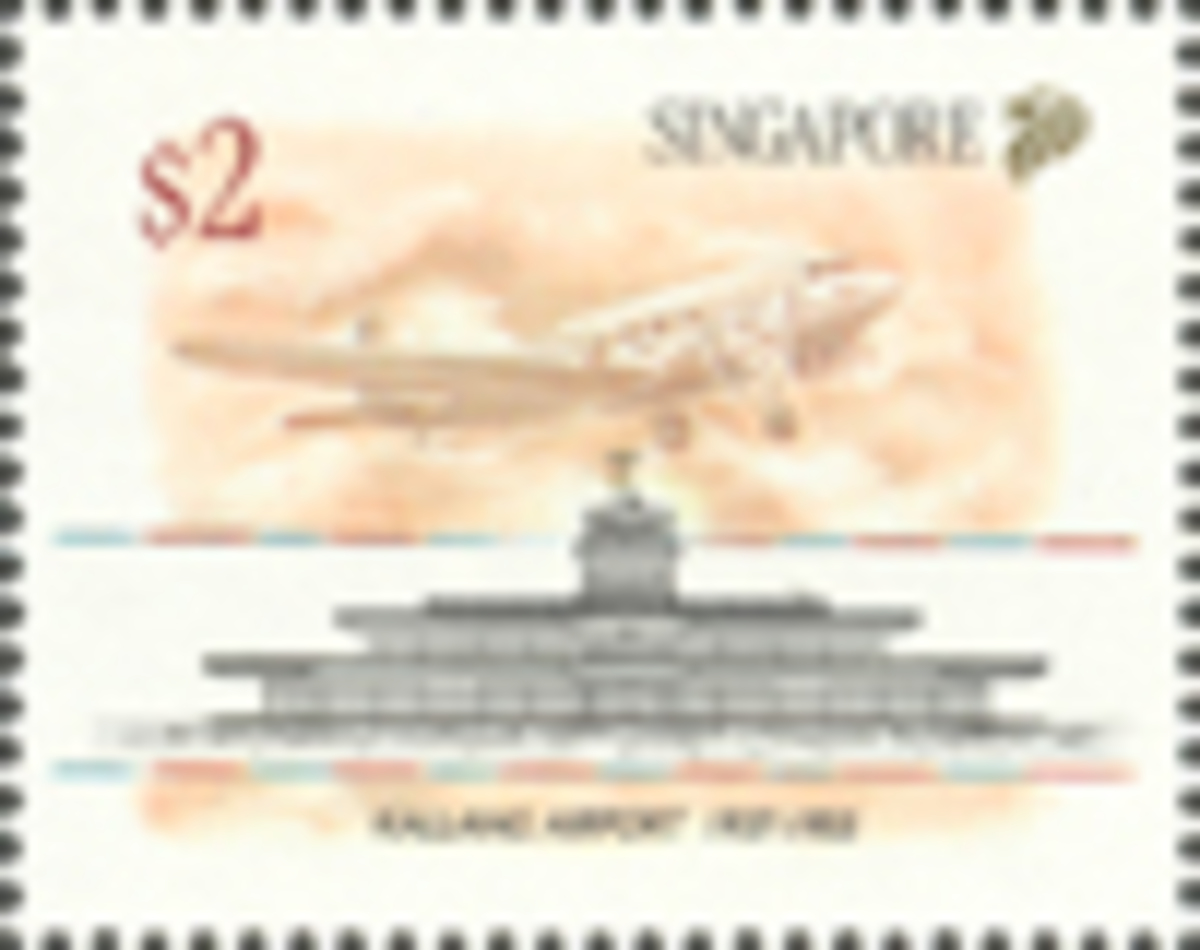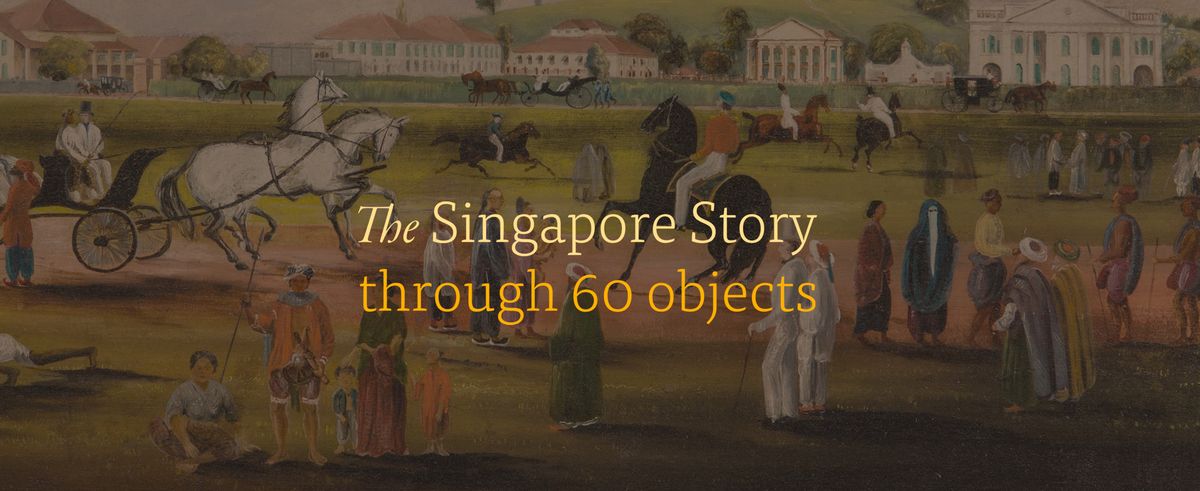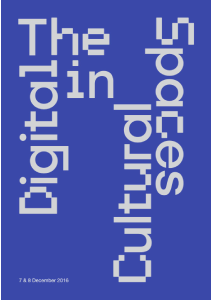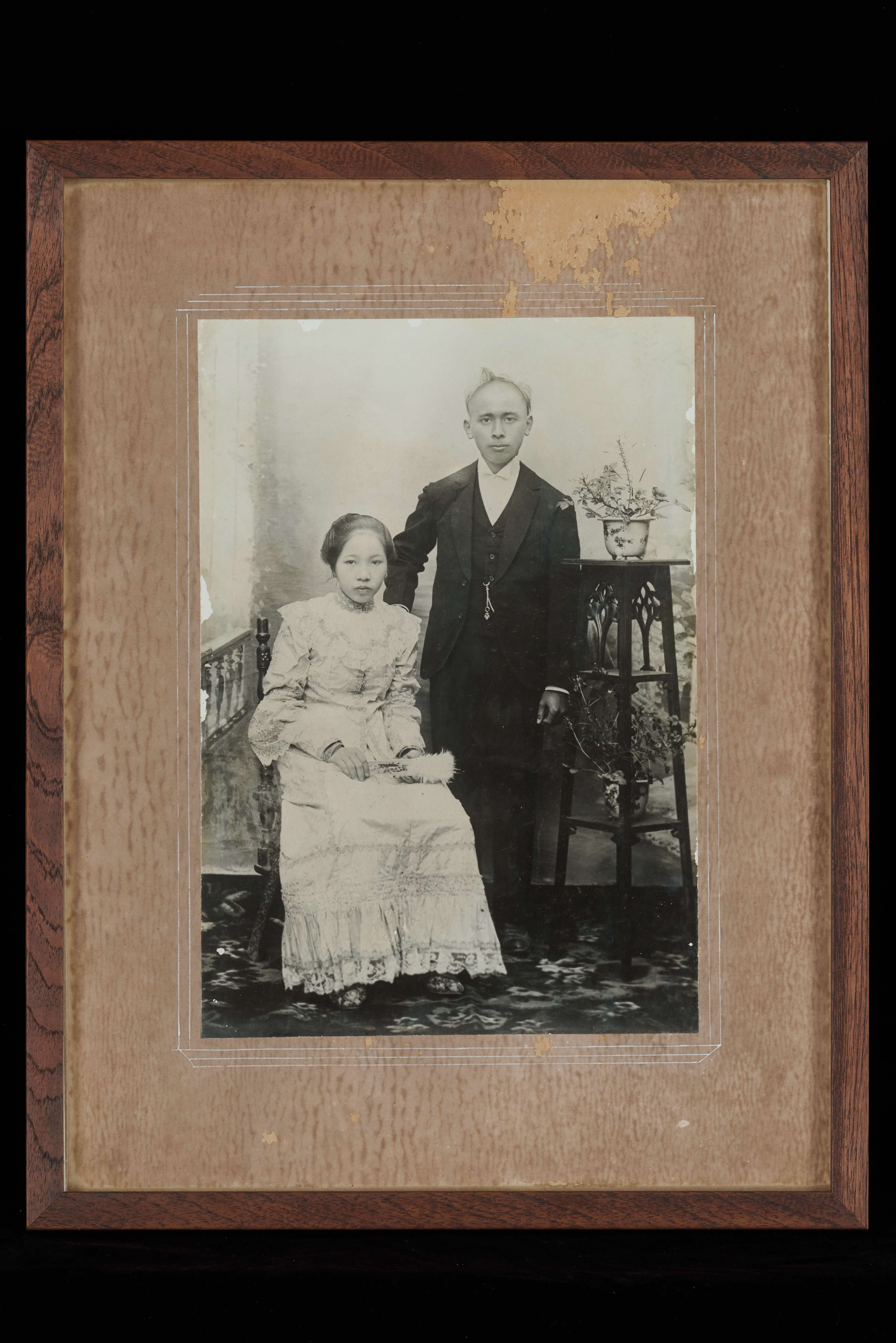For Muslims, Prophet Sulayman (Solomon in the Judeo-Christian tradition) is the third king of Israel, renowned for his wisdom. He was granted many gifts by God such as the ability to command the winds, but his most distinctive power was the ability to understand the languages of different animals. Here, he sits before various creatures who inhabit the earth and sky. A bird holding a letter in its beak appears near Prophet Sulayman, a direct reference to the Quranic story of the hoopoe bird and its mission of delivering the prophet's letter to the queen of Sheba. Curiously, he is depicted in modern Javanese court dress - perhaps as a way to appear more relatable to the intended audience. The ensemble of a turban or blangkon (traditional Javanese men's headwear), fitted jacket with a high collar, a batik sarong and pointed shoes reflects influences from Europe and the wider Islamic world.This scene is painted onto the reverse side of a piece of glass. To create the image, the artist painted details in the foreground before moving on to the background. This method, commonly referred to as "reverse glass painting", allows for the image to be viewed correctly from the other side of the glass.




